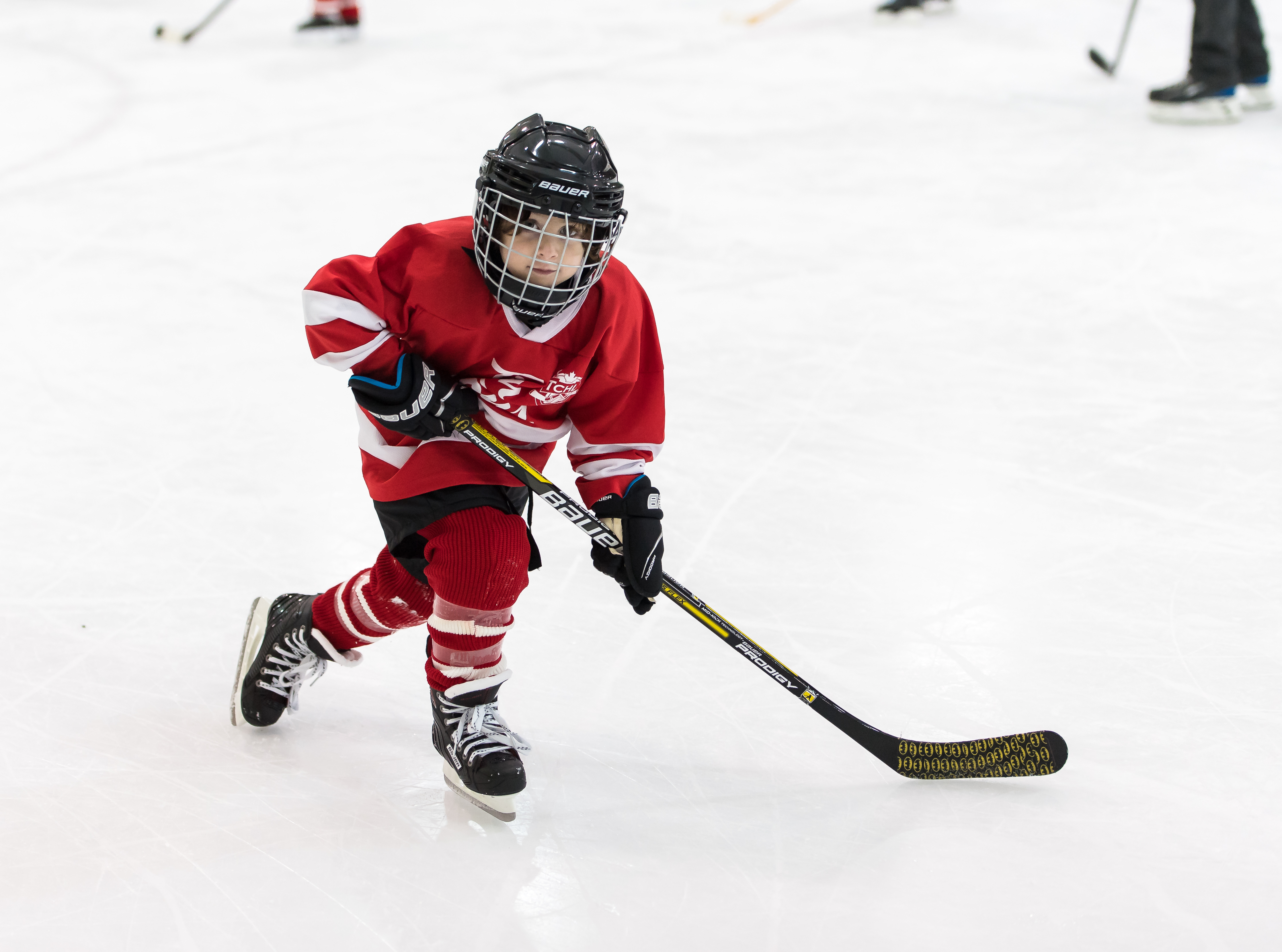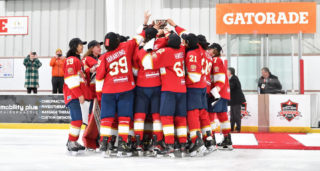Every survey ever done on why kids play sport delivers the same primary answer: “because it’s fun”. The answer is consistent regardless of age or level of competition. “Fun” is the first response.
But what does that mean exactly? There’s no doubt that fun varies from one participant to another, but what are the most common and significant ingredients? Until recently, very little research had been done to actually identify and quantify the factors that constitute the joy of sport participation. Since the 1990s, a whole branch of psychology – positive psychology – has been dedicated to studying happiness in general. But there was virtually no specific academic research into what drove the joy of participation in youth sport. It was just taken as a given, and as a subjective notion.
 In 2014, in the first-of-a-kind study, Amanda J. Visek, Professor at George Washington University, and her research team used a method called concept mapping to categorize and rank the “fun factors” in youth sport. The purpose of the study was to develop a theoretical assessment of fun and generate a “map” as a multi-dimensional framework for sport administrators to maximize fun for kids in order to keep them in the game and promote an active, healthy lifestyle through sport. (The Fun Integration Theory: Towards Sustaining Children and Adolescents Sport Participation)
In 2014, in the first-of-a-kind study, Amanda J. Visek, Professor at George Washington University, and her research team used a method called concept mapping to categorize and rank the “fun factors” in youth sport. The purpose of the study was to develop a theoretical assessment of fun and generate a “map” as a multi-dimensional framework for sport administrators to maximize fun for kids in order to keep them in the game and promote an active, healthy lifestyle through sport. (The Fun Integration Theory: Towards Sustaining Children and Adolescents Sport Participation)
The researchers interviewed kids stratified by age, sex and competitive levels. They also spoke to parents and coaches. They noted that how adults often defined fun for kids, was not how children defined fun for themselves. Some adults thought of “fun” for kids as goofing off, not listening, and not being serious. But Professor Visek notes that kids don’t define fun that way. Her team asked the young participants in the research study to generate a list of what made sport fun for them. Collectively, they came up with 81 separate factors that were “fun determinants” – the specific activities or circumstances that produce pleasure in playing a sport.
The participants were then asked to rank the importance of each of the factors they had identified. On average, the top ranked factors all had to do with aspects of good sportsmanship, trying hard and experiencing positive coaching. The participants referred to such things as: “being challenged and competing, learning a new skill, being with friends, having a coach who respects them, learning from mistakes, working together as a team, applying a skill you learned in practice in a game, improving skills to play at the next level and playing against an evenly matched team.”
Yes, “winning games” was on the ranked list. It was #48.
Of course, individuals will have different priorities. But clearly this broad listing shows that kids see many varying components as comprising the fun that they identify as their prime reason for sport participation.
On the flip side of the coin, lack of fun is identified as the number one reason that kids quit sports. Professor Visek is now working on “not-fun mapping” of the underlying causes of drop-out. What do kids identify as the “not-fun” aspects of their sport? Perhaps not surprisingly, it is reported that “most of the not-fun determinants have to do with adults”. As we all know, there are certainly some extreme sport parents and coaches. (I defy anyone to watch the Netflix documentary “Trophy Kids” and not start screaming at the TV. Forbes calls it “one of the scariest horror movies you’ll ever see”). But even rational and well-intentioned people can sometimes lose perspective. And from studies and anecdotes, this loss of a balanced perspective seems to apply in virtually every youth sport in North America.
The rate of kids dropping out of sport is troubling – 70 per cent by age 13 according to some studies (Changing the Game Project). Early sport specialization and year round training have been cited as some of the factors contributing to loss of fun and burnout. A recent Canadian study by the University of Sherbrooke (Childhood Sports Participation and Adolescent Sport Profile, December 2017) monitored over 700 kids from ages 10 or 11 into their mid-teens and concluded that having kids “sample” different sports in early childhood was the best way to keep them involved in sport. “If children specialize [at a young age] in only one sport and happen to drop out from that activity at one point, they risk having no other sport to fall back to, since they have not been exposed to them and have not developed complementary skills required to fully engage in them,” one of the study authors said. “Parents should therefore seek opportunities for their children to try different physical activities and also avoid having their children take part in any given sport year-round.” (Reuters Health News, November, 2017).
In sport-specific analyses done by experts from 100 organizations world-wide, sports have been characterized as “early specialization” or “late specialization”. Well known early specialization sports include gymnastics, diving and figure skating. But hockey is characterized as late specialization (along with many other sports including basketball, baseball and soccer). Experts agree that if parents have their kids specializing in a single “late specialization” sport too early on, that may contribute to poor development of fundamental sport skills, overuse injuries and burnout. (See IOC consensus statement on youth athletic development, 2015). Putting kids into such programs at a very early age can also create high parental expectations and a pressure-cooker environment. If kids are to be successful and go on to excel in a sport, the drive to succeed must be intrinsic. Of course, athletic development and the trajectory from novice to elite levels vary greatly among individuals, and some kids may be ready and may choose to specialize earlier than others. But an interesting stat from a random study of NCAA Division 1 athletes showed that 98 per cent of them had played other sports before specializing in the one that they played in college.
Long term athlete development (LTAD) programs, such as that adopted by Sport Canada and Hockey Canada, provide models for the development of physical literacy through the stages of a young player’s life. The goal is to nurture athletes’ intrinsic motivation through participation in enjoyable and age appropriate activities.
Of course, there are many other potential hurdles that may affect a player’s opportunity to maintain his or her participation in our game and their progress in skill development. The cost of the game, work and time pressures on young families and the difficulties of transportation are among them. Those root problems are long term challenges, and all of us involved in youth hockey seek to lessen such obstacles. That may require certain changes to minor hockey’s structure and norms. There are some good works-in-progress at a number of levels by teams, clubs, hockey associations and businesses, but it will be an “all of the above” effort over time.
A more immediate step we can take to improve our players’ experience is attitudinal. That is, to simply keep our collective focus on what draws kids to hockey in the first place. The pure love of the sport. It’s up to all of us – coaches, parents, officials and volunteers – to never lose sight of that. To support it and not harm it. If we dilute the fun factor, we not only risk losing current players, but also the opportunities to attract new participants to the great game which is part of Canada’s social fabric.
And finally, if you’d like a reminder of where kids’ hockey starts out, and what we should value and preserve, I would encourage you to search online for Steve Simmons’ Toronto Sun article from about 20 years ago. It’s about the apple juice.







